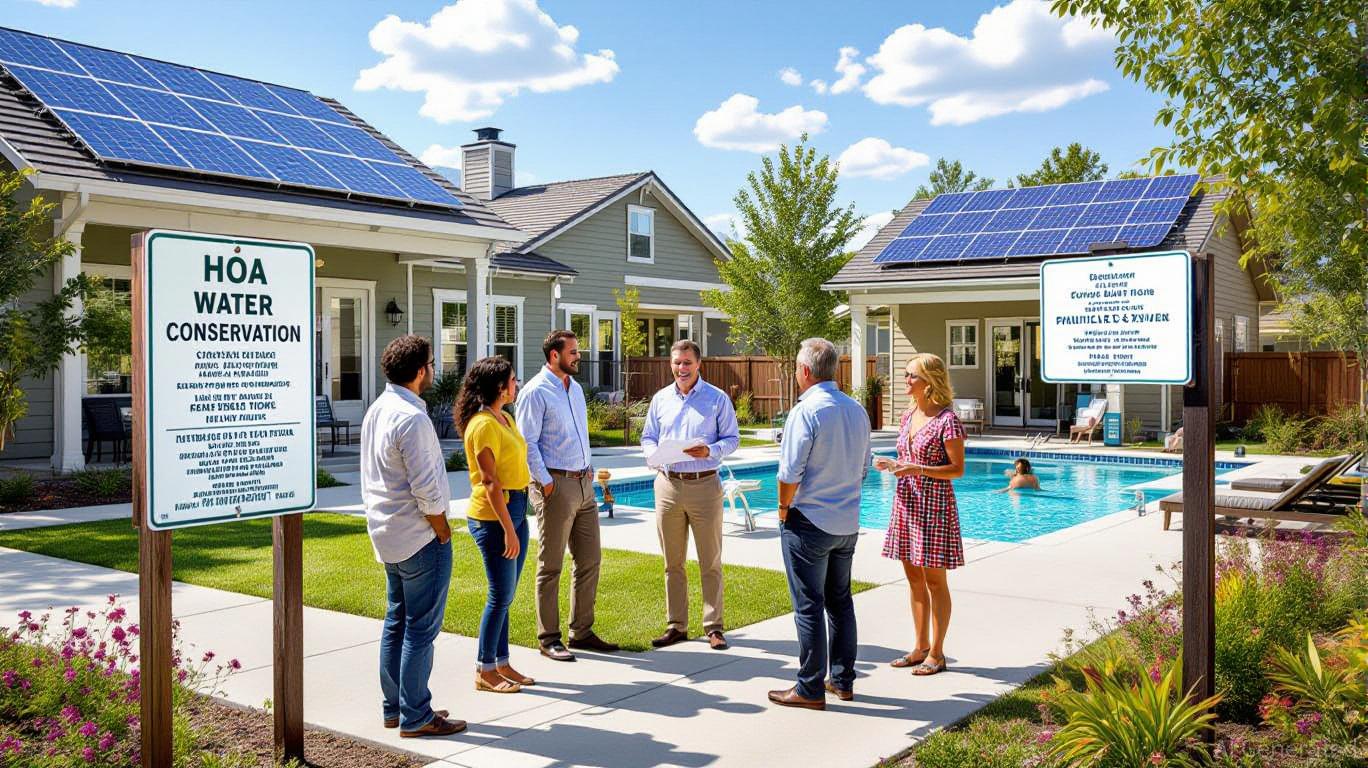Navigating HOA Regulations: A Homeowner’s Guide to the New Landscape

Understanding the HOA Landscape
The dynamic between homeowners and Homeowners Associations (HOAs) is undergoing a significant transformation across the United States. As regulations evolve from Florida to Texas, the implications are far-reaching, affecting not just the way communities are governed, but also the financial landscape for homeowners and investors.
Key Changes in HOA Regulations
1. Homeowner Rights Expansion
Recent changes, particularly in Texas, have amplified homeowner rights, influencing everything from solar energy to water conservation practices.
-
Solar Roofs: House Bill 431 designates solar roof tiles as protected devices, obligating HOAs to approve these installations. This establishes a precedent for homeowners seeking sustainability in their properties. Learn more about renewable energy trends shaping community governance.
- Water Conservation: House Bill 517 prohibits HOAs from penalizing homeowners for non-green lawns during drought conditions. This law recognizes environmental realities, especially in arid regions, reducing disputes and fines.
2. Political Expression in HOA Communities
House Bill 621 allows homeowners to host political candidates in common areas. Although HOAs retain operational oversight, this change may lead to legal disputes and rising tensions, especially in politically polarized environments.
Financial Implications of New Regulations
The altered legislative landscape is reshaping the financial backdrop for HOA communities:
-
Increased Administrative Costs: Compliance with new regulations involves higher administrative expenses for HOAs, particularly as they develop transparency protocols.
- Property Value Trends: Data shows that well-managed HOAs can increase property values by 4–6% compared to non-HOA neighborhoods. Even amid rising fees, effective management can yield long-term benefits.
Spotlight: The Florida Example
Following the tragic Champlain Towers incident, Florida implemented tougher reserve fund requirements for HOAs. As a result:
- Monthly assessments have surged, reflecting the need to prepare for potential repair costs.
- Yet, these changes have led to property value increases surpassing the national average by 2.3% in 2025, according to the Florida Realtors Association.
Strategies for Investors
With these changes on the horizon, real estate investors must strategically navigate HOA environments:
Focus Areas for Real Estate Investment
-
Sunbelt Markets: States like Texas, Florida, and Arizona are hotspots for new HOA regulations and growth in suburban living. For example, Dallas-Fort Worth communities are witnessing a 7.5% year-over-year increase in median home prices.
-
Reserve Fund Health: Assess HOA communities by examining their reserve studies. A community with a 20% reserve ratio is typically better prepared for unanticipated costs compared to the national average of 12%.
- Sustainability Features: HOAs implementing green initiatives are attracting environmentally conscious buyers, leading to quicker sales—10–15% faster than traditional listings.
Legal Preparedness
Proper legal compliance can mitigate many risks associated with HOA governance:
- Communities with strong governance and transparent processes are less susceptible to lawsuits, protecting property values in the long run.
Understanding the Risks
Homeowner pushback against rising HOA fees can have drastic consequences. In California, HOA fees surged by 32.4% over the past decade, triggering a wave of class-action lawsuits. This trend signals potential devaluations of 5–10% for HOA-governed properties in high-fee areas.
Conclusion: The Future of HOA Governance
As the landscape of HOA regulations continues to evolve, homeowners and investors alike must adapt. The Sunbelt region is ripe with opportunities for those able to grasp the complexities of the current climate.
When considering suburban real estate, ask: Is this HOA a partner or a problem? Understanding the answer is vital for maximizing returns in today’s shifting market.
For more insights into navigating homeowner associations, explore resources such as American Homeowners Association.


